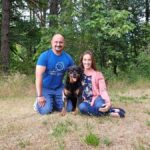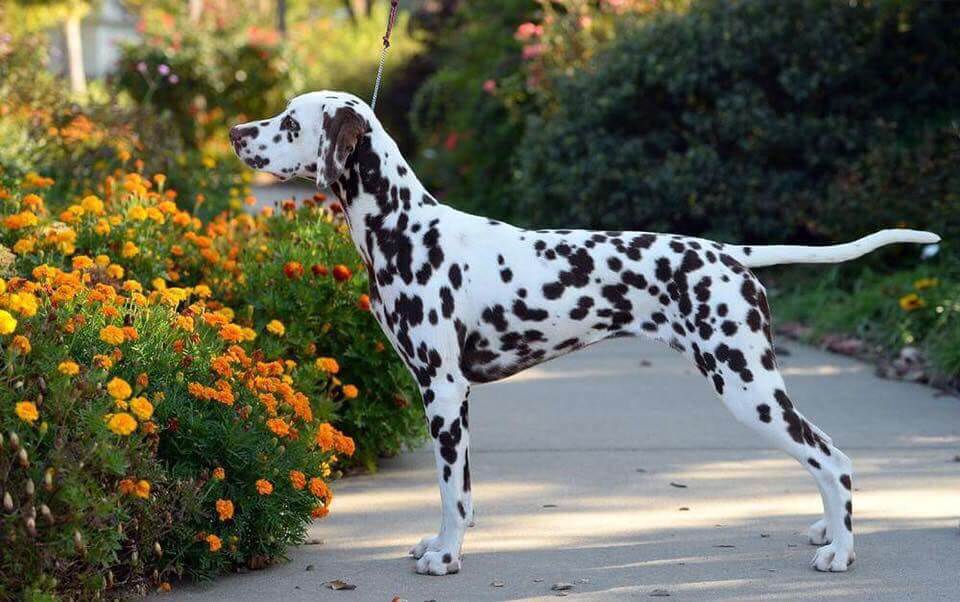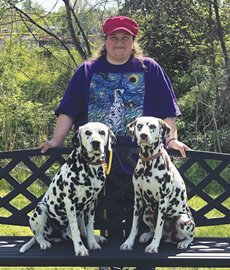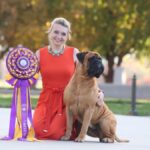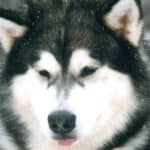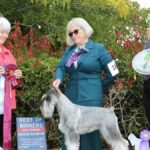Interview with Non-Sporting Group Breeder Lily Strait
Where do I live? How many years in dogs? How many years as a breeder?
Lily Strait: I live in Leslie, Missouri. I have been in dogs for 21 years, and a breeder for 17 years.
What is my kennel name? How many dogs do I currently keep?
Lily Strait: My kennel name is Dreamworks. I currently keep 10 dogs.
Which show dogs from the past have been my noteworthy winners?
Lily Strait: BISS GCH Dreamworks All Spark CGC, “Prime,” finished his AKC championship going Winners Dog at the 2013 Dalmatian Club of America National. He went on to be a Best in Specialty winner and a Group winner, and is the sire and grandsire of multiple Specialty-winning and Group-winning/Group-placing Dalmatians.
MBISS GCHB Dreamworks Let The Storm Rage On At Arrowhead, “Storm” (Prime’s granddaughter), at just two years old is a Multi-Best in Specialty winner, Group Winner, currently ranked No. 12 in Breed, and is competing in this year’s 2022 Westminster Kennel Club Dog Show.
Which have been my most influential sires and dams?
Lily Strait: My breeding program wouldn’t exist without my foundation bitch and heart dog, CH HiSpot’s Magical Journey CGC. “Journey” can be found in the pedigree of almost every Dreamworks Dalmatian to date. Without her, I would never have known how loyal, loving, and entertaining Dalmatians could be.
Journey’s daughter, “Envy,” CH Dreamworks You’re Just Jealous CGC, was not only my first homebred champion, she was a rockstar producer.
“Prime,” BISS GCH Dreamworks All Spark CGC, is Envy’s son and holds the records for a “number of firsts” for me. Not only has he done some impressive winning, he too has produced well.
Prime’s daughter, “Pixel,” CH Dreamworks Pixilated, holds the record for top producer here at Dreamworks. She finished her AKC championship at a young age with four Specialty majors, including a Specialty BOS over a large entry of top-ranked specials. But her greatest achievement is in the whelping box. In two litters, she has produced outstandingly. Several of her kids are currently in the specials ring. They hold awards that range from their AKC championship, grand championship, AOM, MBISS, Group Placements and Group Wins, as well as several performance titles. Pixel is the dam of Storm who is attending Westminster in June.
Can I talk a bit about my facilities? Where are my puppies whelped? How are they raised?
Lily Strait: I live on a little over five acres nestled in the beautiful Missouri countryside. My walkout basement opens onto two dog yards. I have both inside and outside kennel runs, along with both grooming and training areas to care for, train, and condition dogs. Puppies are whelped in my home. I have a puppy room on the main floor that has a whelping area and puppy exercise area. All of my puppies are raised in my home as part of the family. I use the Puppy Culture program for early development. The program focuses on building a strong neurological system, behavior development, and creating stars in both the performance and breed rings.
What is my “process” for selecting show puppies? At what age did I make my decisions?
With Dalmatians, moderation is key, and balance tells you what you should see on the move. I want to see puppies that can hold themselves together as they move confidently around the yard. I’m also looking at temperaments and gauging who has that stand-out personality that will set them apart in the breed ring.
Lily Strait: With Dalmatians, the selection process for show puppies starts the moment they are born. One of the disqualifications for the breed ring is a solid patch of color (black or liver), which is present from birth. Everything is a waiting game with Dalmatians. We wait to see eye color, spotting pattern (which includes color, spot size, too many (densely spotted), too little (large areas of white), and hearing results. This is in addition to all the normal things breeders are waiting to see develop such as structure, movement, and temperament. While I’m waiting to learn who can hear, I’m watching them develop structurally. I start holding puppies up in a stacked position within the first week. I’m looking for balance, and you can see a lot right from the start. As they start getting up on their legs, I’m watching how they move around. Once they begin trotting, I look for clean movement coming and going, and I want to see nice, big steps with correct footfall. While they are moving, I’m evaluating who has strong, level toplines with tails that are an extension of the topline. I want to see correct croups, tail carriage, and ground-covering reach and drive. Looking to see who has strong rears that can drive a powerful front assembly with correct upper arm extension. I’m checking angles—front and rear. With Dalmatians, moderation is key, and balance tells you what you should see on the move. I want to see puppies that can hold themselves together as they move confidently around the yard. I’m also looking at temperaments and gauging who has that stand-out personality that will set them apart in the breed ring. All puppies are exposed to situations that challenge them to build confidence while bringing out their individual personalities. I’m looking for the puppies in the litter that “jump out” at you. Final decisions are made at eight weeks of age, after completing BAER testing at seven weeks.
How do I prepare my pups for the show ring? Does my breed require any special preparation?
Lily Strait: Because of the early development training I do for all my puppies, preparing them for the ring is fairly simple. The main thing I do is expose them to as many different environments, people, and dogs as possible. I work them on show leads in public places like the park, local pet-friendly stores and, when available, conformation classes. I work them through standing for an exam by having as many different people as possible go over them. They learn to move on a loose lead and free-stack while multiple distractions are going on around them. The more situations to which I can expose them, the better they are set up for success in the ring. Dalmatians require no special preparation. They are easy keepers inside and outside of the ring. Proper training and conditioning are all they need to showcase their natural beauty
and athleticism.
Can I share my thoughts on how my breed is currently presented in the show ring?
Lily Strait: Presented correctly, Dalmatians should be moved on a loose lead, showcasing the dogs that can drop their head and move out with powerful reach and drive while being light on their feet. You should also be able to see their ground-covering movement which can carry them for 25-plus miles without breaking down structurally. They should be able to move around a large ring effortlessly. Currently, many exhibitors are racing them around the ring with their heads pulled back over their shoulders in an upright position. This is incorrect presentation for a breed bred for endurance; they are meant to travel for long distances at a trot.
Are there any health-related concerns within my breed? Any special nutritional needs?
Lily Strait: Dalmatians have two major health issues that affect the breed as a whole: deafness and urate stones. We are also seeing an increase in CSD (Copper Storage Disease) and Juvenile Renal Disease. Because Dalmatians are genetically prone to urate stones, a low purine diet is required. Increased water intake is also important; floating their food (adding water) is a normal practice for Dalmatian owners.
In my opinion, is my breed in good condition overall? Any trends that warrant concern?
Lily Strait: I’m concerned about the trend to breed for a flashy outline. Dalmatians are a movement breed. No matter how beautiful a dog looks standing there, if it cannot move properly and effortlessly it is not a correctly built Dalmatian. Movement should be a focal point in every good breeding program. We should be able to know exactly what correct movement is and see why a dog moves the way it does. This should be taught to all those interested in preserving Dalmatians for centuries to come. Judges’ education should be focusing on identifying correct movement, and they should be rewarding it in the ring. Dalmatians are more than a flashy outline or pretty spots.
Is my breed well-suited to be a family dog? Who are the best candidates to own my breed?
Lily Strait: Yes, Dalmatians are well-suited to be a family dog. Any active family or individual who is willing to put a little time into training and doesn’t get flustered by dog hair would be a great home for a Dalmatian. They are a versatile breed, bred for thousands of years to work with humans in any task needed. If you want a dog that is up for performance sports, hiking, swimming, jogging, or simply playing, a Dalmatian is willing and able to do it. They are the perfect mix of athletic energy and couch potato. Dalmatians can switch from playing a competitive sport to snuggling on the couch with the kids for a movie night in the blink of an eye. Dalmatians are just happy being with their people. I’ve yet to meet a breed as versatile as a good Dalmatian.
Do I feel that my breed is supported by a sufficient number of preservation breeders?
Lily Strait: This is a question every dog fancier out there should ask themselves. Overall, I think we are in trouble as a breed. Although we do have a handful of preservation breeders, we don’t have nearly enough up-and-comers in Dalmatians. As our wise breeders retire or leave us, we are losing the wisdom they have to offer the new generation of breeders. It’s a difficult breed to get people involved in. There are so many factors that go into simply getting a puppy that meets all the qualifications to step into the breed ring. When people actually find out just how much we have to look at when breeding, raising, and selecting puppies, it can be daunting. The long list of hurdles Dalmatian breeders have to jump, in order to produce that next generation, causes many breeders to be unwilling to place their best show/breeding prospects. Whether it’s a new, enthusiastic exhibitor looking to step into the dog world or an aspiring breeder who is looking to improve their breeding program, we should be encouraging them to get involved and setting them up for success. If we don’t do that now, there will be no one to pass the wisdom and knowledge on to. Not sharing our successes and failures with the next generation does a huge disservice to our sport and our beloved breed. We need more preservation breeders and we need to be willing to place our nice puppies in homes with people who are willing to work hard to learn what the title “preservation breeder” entails. It’s not something simply given to those who can recite the definition; it’s earned by those people who are willing take on what many preservation breeders in other breeds call the “impossible task.” It’s not impossible to breed Dalmatians—it just requires a lot of patience and grit to withstand the heartbreak of limited show prospects and tough decisions that must be made.
For a bit of fun, what’s the most amusing thing I’ve ever experienced with a Non-Sporting Dog?
Lily Strait: At a recent Dalmatian National, one of the beautiful boy specials slipped his lead during a picture session. He proceeded to grab one of the photographer’s toys and made his way to the empty ring where he spent a few thrilling minutes zooming around and tossing, catching, and squeaking his prize for all the spectators’ entertainment. The more we laughed and cheered, the happier and faster his good-natured antics amped up. I like to think he was reminding us why we do this; it’s about those moments of seeing our dogs living their lives with pure,
joyful abandon.
